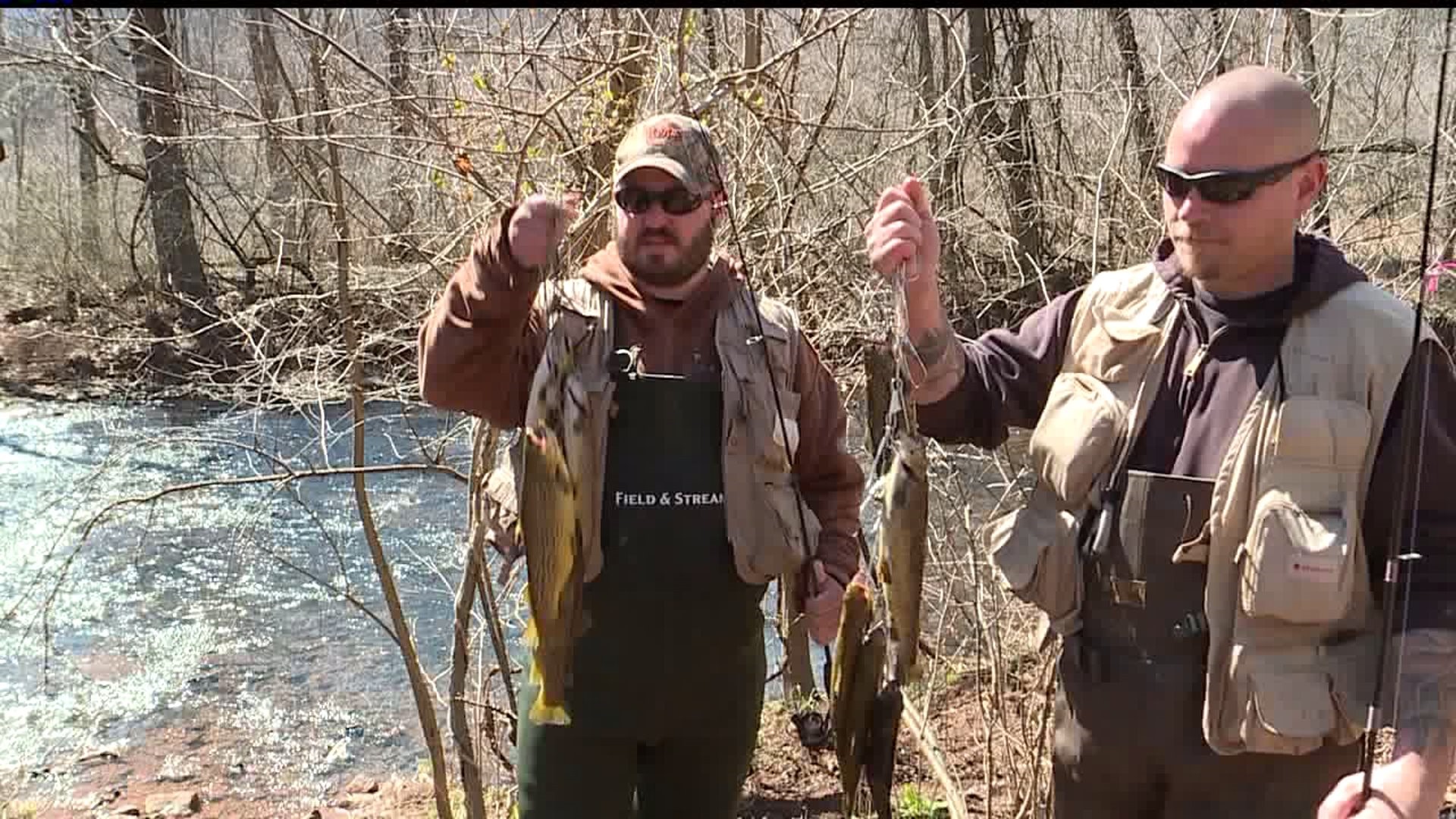PENNSYLVANIA, USA — Editor's Note: The above video is from the first day of trout season in 2018.
Pennsylvania's statewide opening day of trout season starts on April 3.
Fishing can begin at 8 a.m., and the start date and time is the same throughout all 67 counties. This change was implemented in 2021 so that anglers would have an extra two weeks to fish this season statewide. The change also helps reduce travel associated with different opening days, and allows for more social distancing, as there won't be as many people at popular fishing spots at the same time.
“Trout fishing in the spring is among Pennsylvania’s greatest outdoor traditions and anglers are gearing up for one of the most highly anticipated days of the year,” Tim Schaeffer, executive director of the Pennsylvania Fish and Boat Commission, said. “After a long winter and a very challenging year, we’re all looking for fun, safe, and affordable ways to get outside, relax, and spend time with our families. Trout fishing is right at the top of the list for people of all ages.”
In order to participate in trout fishing, anglers must be at least 16 years old and have a Pennsylvania fishing license and a trout permit. These licenses can be obtained using the FishBoatPA mobile app, online, and in-person at license issuing agents.
The Pennsylvania Fish and Boat Commission (PFBC) will stock approximately 3.2 million adult trout in 701 streams and 128 lakes throughout the state. In addition to these trout, which are raised at state fish hatcheries, the PFBC is partnered with several sportsmen's clubs and other groups across the state that will stock these bodies of water with an additional one million trout during the season.
During the season, anglers may keep up to five trout a day with a minimum size of seven inches. Complete rules and regulations for fishing in Pennsylvania can be found here.
The PFBC also reminds anglers to wear a life jacket while fishing. This is required by the U.S. Coast Guard from November 1 through April 30. This is a requirement throughout the state.
The PFBC also wants to remind anglers of the following proper catch-and-release fishing techniques:
- Land your fish as quickly as possible and don’t play the fish to exhaustion. Excessive stress and exhaustion increases post-release mortality.
- Use a landing net (rubber or rubberized mesh is best) to better control your catch and reduce trauma associated with handling.
- Keep the fish in the water as much as possible. The chance of a fish being injured increases the longer it is held out of the water.
- Wet your hands, your net, and other materials that touch the fish. Don’t handle fish with a towel or rag. This helps to keep a fish’s protective mucus or slime layer in place.
- Hold the fish upside down while removing the hook. This can calm the fish for quicker unhooking and release.
- Use hemostats or long nose pliers to aid in removing a hook quickly and safely. Use barbless hooks or pinch down barbs on existing hooks with small pliers to make removing hooks easier.
- When not possible to remove the hook without harming the fish, cut the line or harvest to eat (subject to season, length, and creel limits).
- Avoid contact with the gills and do not handle by placing your fingers under the operculum (gill cover).
- Hold the fish upright underwater after unhooking until it can swim away on its own. If necessary, gently hold the fish out of strong current until it revives.

